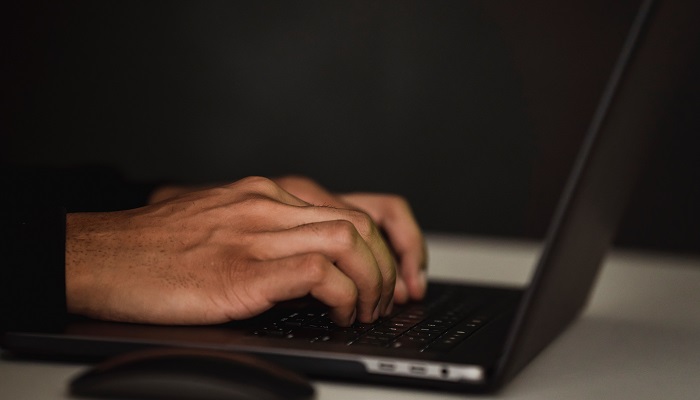Contact tracing is an important public health tool used to track and limit the spread of infectious diseases. It involves identifying people who have been in contact with a person infected by a contagious disease, and then quickly alerting them so they can take steps to protect themselves and others. Contact tracing has proven to be one of the most effective ways to contain outbreaks, as it allows for early detection, isolation, and treatment of those exposed before symptoms even appear. By following this process diligently, contact tracers help prevent further transmission of disease in communities—and ultimately save lives.
Understanding Contact Tracing – What Is It?
Contact tracing is a process by which public health officials identify, assess, and manage people who have been in contact with an infected person. It involves identifying anyone who may have come into contact with the infectious person prior to their diagnosis, as well as any additional people those contacts then may have come into contact with. Contact tracers collect a range of identifying information, including names, contact numbers, and addresses so they can quickly reach out to those affected. Now, electronic contract tracing in the healthcare industry is becoming more commonplace, as it enables contact tracers to quickly and accurately identify those who may have been exposed. Conversely, manual contact tracing is labor-intensive and often less accurate, as it relies on individuals to remember their contacts. The goal of contact tracing is twofold: first, to identify those who may have been exposed and quickly alert them so they can take steps to protect themselves and others; second, to control the spread of infectious diseases by preventing further transmission.
Identifying Contacts of An Infected Person
This typically involves tracing their movements prior to diagnosis and identifying anyone with whom they may have had close contact, such as through physical interactions or by sharing a confined space. Contact tracers use this information to create a list of people who are at risk of infection, which is known as a contact list. Those on the contact list are then notified that they may have been exposed to the virus and should take appropriate precautions, such as self-quarantine and regular symptom monitoring. Additional contact tracing may be required if new contacts are identified during the course of an investigation.
Assessing Risks Associated with Potential Contacts
In addition to identifying contacts, contact tracers also assess the risk posed by potential contacts. This is done by assessing factors such as the degree of contact and the length of time spent in close proximity to the infected person. The purpose of this assessment is to determine which individuals are at a higher risk of developing an infection and therefore should be prioritized for contact tracing.
Implementing Preventive Measures For Those at Risk
Once contact tracers have identified and assessed the contacts of an infected person, they can then implement preventive measures to reduce the risk of infection among those at higher risk. This may involve recommending self-quarantine for a certain period of time, regular symptom monitoring, or other precautionary measures such as social distancing. It is important for contact tracers to ensure that those at risk are aware of the preventive measures they should take, as this is essential for reducing the spread of infection.
Monitoring The Health of Those Exposed to Ensure Symptoms Don’t Develop or Worsen
Contact tracers must also monitor the health of those who may have been exposed to ensure that any symptoms they experience do not worsen or spread. This is done by regularly checking in with those on the contact list and monitoring for any changes in their health status. If any new symptoms are observed, then contact-tracing efforts can be increased to identify additional contacts who may need to be monitored.
Isolating and Quarantining People Who Test Positive or Show Symptoms
Contact tracers must ensure that those who test positive or show symptoms of the infection are isolated and quarantined in order to prevent further transmission. This is done by providing guidance on self-isolation and working with local health authorities to arrange for the necessary isolation measures, depending on the issue. It is also important for contact tracers to provide support for those in isolation, such as ensuring they have access to necessary medical care and other necessities.

Recommending Testing To Those Who May Have Been Exposed
This helps ensure that any infected individuals are quickly identified and can be isolated from the general population in order to prevent the further spread of the virus. Furthermore, contact tracers can provide guidance on where and how to get tested, as well as any other necessary information related to the testing process. They can also provide advice on how to protect oneself from infection, such as by avoiding certain activities or environments.
Documenting and Reporting All Contact Tracing Efforts
This helps health authorities understand the spread of the virus, identify areas of higher risk, and take appropriate action to contain the spread. Additionally, documentation can also provide valuable insights into contact tracing efforts for future research and policy-making.
Providing Support Services To Ensure Compliance With The Quarantine
Contact tracers must provide support services to ensure compliance with the quarantine and other preventive measures. This includes providing information on available resources and support systems for those in isolation, as well as providing guidance on how to stay safe while in quarantine. Contact tracers must also make sure that those in quarantine are aware of the risks associated with breaking the quarantine.
Educating Communities on The Issue of Contact Tracing
Contact tracers must also provide education and training to members of the community on contact tracing and its importance in preventing the spread of infection. This includes providing information on how contact tracing works, what preventive measures should be taken, and why it is important for everyone to participate in the process. Additionally, contact tracers can help raise awareness of the issue and help build public trust in contact-tracing efforts.
The ultimate goal of contact tracing is to limit the spread of infectious disease by quickly identifying those who have been exposed and ensuring that proper preventative measures are taken. This is achieved through proactive monitoring, isolating infected individuals, recommending testing, documenting contacts, and providing support services. Contact tracing is also an essential part of educating communities about the importance of preventive measures and helping build public trust in contact-tracing efforts. As such, it is a critically important tool for controlling the spread of infectious diseases.


















